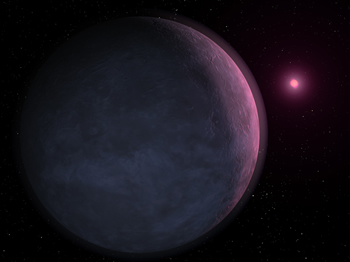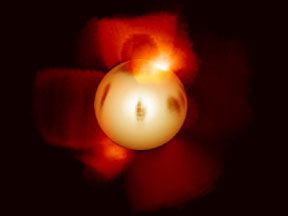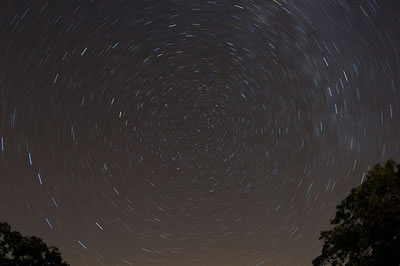Artist's concept of a rocky planet in orbit around a distant star.
Click on image for full size
NASA, ESA and G. Bacon (STScI)
Planets around other Stars
Did you know that about 200 planets have been discovered in orbit around distant stars? The first planet found to be orbiting a star like our Sun was announced in 1995. Since then astronomers have continued to find new planets outside of
our solar system, at a rate of more than one new planet every month!
The star and its planet orbit a common center of gravity. The planet moves in a wide orbit, while the star just appears to wobble slightly. By measuring the Doppler shift from the spectrum of the star, scientists can detect the tiny motion caused by the planet. Most of the distant planets were discovered using this technique.
If we are lucky enough to be lined up properly with the planet's orbit, it can occasionally pass in front of the star, blocking out some of the light that we usually see from the star and briefly making it appear dimmer. It's like a solar eclipse, but the planet only covers a small fraction of the star. Only a few of the planets outside of our solar system pass in front of their stars.
All of the distant planets are much too far away to resolve directly. We can only see their effect on the star that they orbit.
You might also be interested in:

An eclipse of the Sun occurs when the Earth passes through the Moon's shadow. A total eclipse of the Sun takes place only during a new moon, when the Moon is directly between the Sun and the Earth and
...more
A team of international astronomers reports in the Feb. 15 issue of Science the discovery of a solar system nearly 5,000 light years away containing scaled-down versions of Jupiter and Saturn. Their findings
...more
Astronomers have discovered an extrasolar planet only three times more massive than our own, the smallest yet observed orbiting a normal star. The star itself is not large, perhaps as little as one twentieth
...more
In recent years astronomers have become able to detect "starspots" on distant stars! Like the sunspots that frequently dot the "surface" of the nearest star, our Sun, starspots are relatively cool, dark
...more
Astronomers use the term "magnitude" to describe the brightness of an object. The magnitude scale for stars was invented by the ancient Greeks, possibly by Hipparchus around 150 B.C. The Greeks grouped
...more
Because of the rotation of the Earth and its orbit around the Sun, we divide the stars and constellations into two groups. Some stars and constellations never rise nor set, and they are called circumpolar.
...more
In the 1960's, the United States launched a series of satellites to look for very high energy photons, called Gamma Rays, that are produced whenever a nuclear bomb explodes. These satellites soon detected
...more















